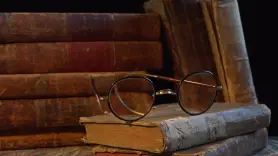The site move to Bluehost occupied a bit of my time (although not nearly as much as I had thought), but I considered skipping a Recommended Reading post for this week, but I am glad I didn’t as there was a good selection of worthwhile posts this week to talk about!
For this week’s featured post, we have a rather controversial topic that I’ve seen many people get into heated discussions on, which is whether there is value in post processing color film.
Hamish Gil from 35mmc not only takes on this topic, but also shares his process. I’ll go on the record here and say I absolutely support the idea of using modern digital tools to further enhance film photography. While there are some purists that feel that digital manipulation ruins the point of shooting film (if you’re going to digitally alter your images why not just shoot digital), I don’t see it that way. Since the beginning of photography, people have been using filters and other objects to “alter” their images. Black and while film plates and negatives have been colorized using special pencils, people have been cross processing or otherwise chemically altering their images, all in the name of “enhancing” the image that comes from their film camera.
I truly believe that if modern tools like Photoshop and Lightroom existed way back then, many (not all) photographers would have used them as well. The desire of altering a photograph can be done before, during, or after the image is captured, and whichever process you choose (or none at all), in no way takes away from the “purity” of film photography.
Here are more great posts from some of my favorite sites:
Hot off the press, Alex Luyckx posted episode 53 of his Classic Camera Revival podcast, along with a supplementary blog post on his thoughts about the Pentax Spotmatic. As I write this, the podcast has been live less than an hour, so I haven’t yet had a chance to listen to it, but I’ve listened to Alex many times in the past and I’ve spoken to him one on one, so I have no doubt that this will be a quality listen.
The Canon AT-1 is the unpopular sibling of the very capable Canon A-series of SLRS. Along with the AE-1, AE-1 Program, and A-1, millions of Canon A-series cameras have been sold over the years, and this week, Gavin Bain from 35mmc.com shares with us his thoughts on the Canon AT-1. A fully manual camera with only a match needle meter, the AT-1 was created as a low cost option to the AE-1. Despite it’s rudimentary feature set, it supports Canon’s full family of FD mount lenses, so it should still be capable of excellent images, right?
I’m a huge fan of mid century Ricoh rangefinders, TLRs, and even their early leaf shutter SLRs. I haven’t yet ventured into their electronic SLRs of the 80s, but thankfully there are people like Peggy Marsh who do it for me! This week she reviews the Ricoh KR-10 from 1980-something. An entry level camera for sure, but when paired with a talented photographer like Peggy, can make for a capable combination! Check out her thoughts in her review on her site, Camera Go Camera.
There are camera reviews, lens reviews, development reviews, but one type of photographic review I’ve never seen before is lens shade reviews. Thankfully, we have Johnny Martyr here to provide us with a well written, and surprisingly thorough look at a large selection of Leica lens shades. As with most Leica accessories, each of these have a goofy sounding name, and Johnny cuts through the clutter and somehow manages to get me excited about FIKUSes and SOOMPs!
The Contax T2. Is this the one that the Kardashian uses or Chris Helmsworth? I can’t even keep track of which celebrities are over inflating prices of electronic cameras these days. I would never turn down the opportunity to shoot with one of these cameras, but their electronic innards scare the crap out of me, and when combined with their high prices these days, these cameras are usually in the “no fly territory” for me, so it was with great interest that I read Aaron Stennett from Casual Photophile’s report on one.
The Nikon FA is one of my favorite Nikon SLRs ever. In fact, it’s actually at Gary Camera in Merrillville, Indiana as the shop owner attempts to find a replacement rewind knob, as mine was missing one when I got it. Anyway, this week Jim Grey attempts to thin the herd of this wonderful electronic Nikon from the early 80s. Jim had generally nice things to say about the camera, but is hung up that the film advance lever hits his forehead when he holds the camera to his eye. As a left eye shooter myself, I’ve never found this to be a problem with Nikon SLRs, so it’s not something I can relate to. Nevertheless, check out his thoughts and excellent sample photos he got with his.
Out of all of the different camera designs I’ve tried and my appreciation for home developing and scanning, one thing I have yet to attempt is enlarging images to make prints of my photos. It’s not as if I can’t find enlargers at garage sales for dirt cheap, but I guess it’s just something I haven’t had an interest in yet. But after reading EMULSIVE’s post on creating a compact, portable, and home made darkroom enlarger, I may have to give it a go. Even if you already have an enlarger, seeing how this one was built is worth checking out!
Finally, for my headbangers album of the week, I thought I’d share with you a gem I stumbled upon by blackish folk death metal band, Wormwitch. Hailing from British Columbia, Canada, Wormwitch’s recent album “Heaven That Dwells Within” is a powerful slab of metal that grabs you by the nutsack from the first note of the first track and never lets go. This is some intense metal that likely isn’t for everyone, but what I like so much about their sound is that they push the limits of black and death metal, without crossing any lines, blending in some surprisingly delicate folkish melodies, and clean guitar solos that the entire album never gets stale. With a run time of just over 45 minutes, this album is the perfect length of intensity without the repetitive boredom that the genre often falls victim to.



Super interesting selection (as always)!
P.S. I think there’s an error in the Contax T2 link, but it was easy to find anyway.
Sroyon, thanks for the heads up! I fixed the link to the Contax T2 review.